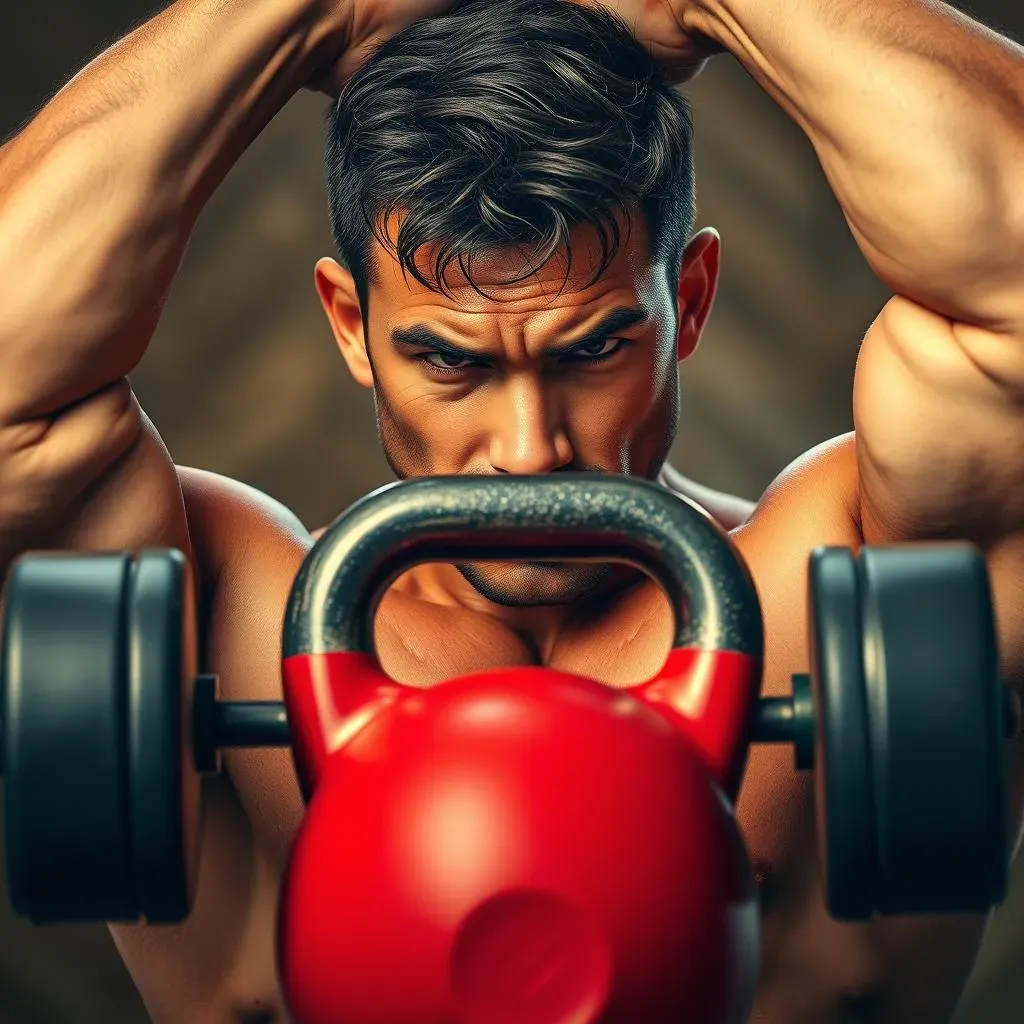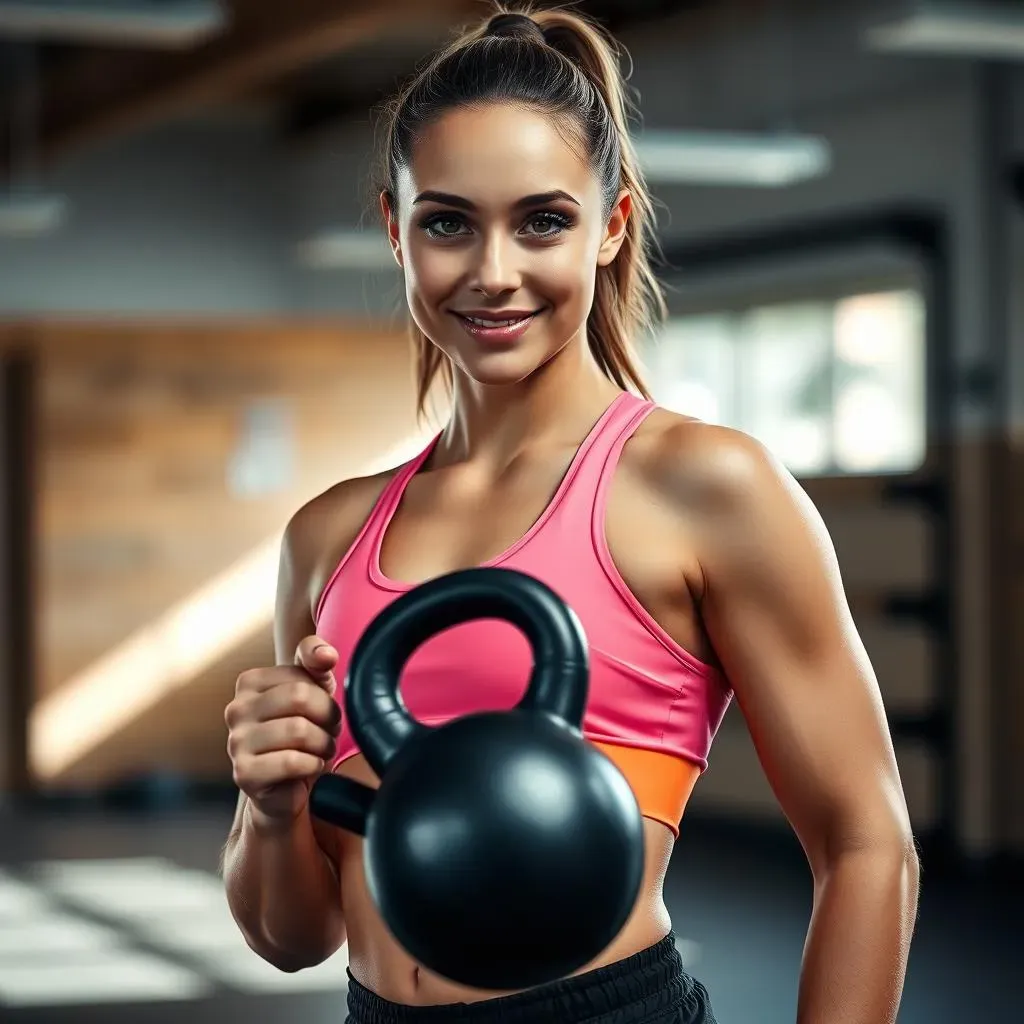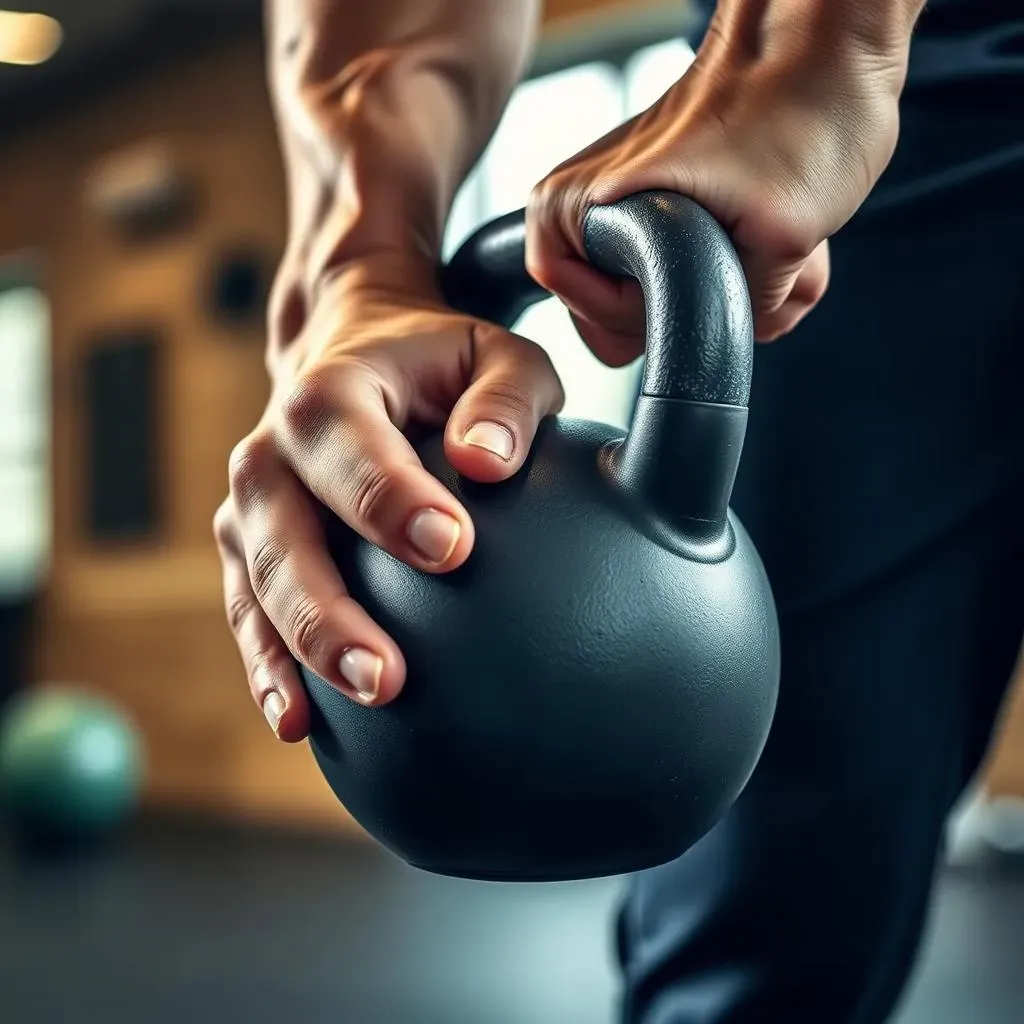Table of Contents
Ready to crank up your upper body strength and torch some calories? Forget those fancy gym machines, all you need is one trusty kettlebell. This isn't your grandma's workout; we're diving headfirst into the world of the "upper body kettlebell hiit workout," a seriously effective way to build muscle, boost power, and get your heart pumping. We'll explore ten killer exercises that use a single kettlebell, each designed to target different muscles in your upper body. Think shoulders, back, arms, and even your core – all getting a serious workout. I'll walk you through each move, show you how to do them right and make sure you're not just swinging a weight around like a goofball. We will also talk about how to make this work for you, how to pace yourself and how to listen to your body, because pushing too hard is never the answer. By the end, you'll be armed with a workout that's both challenging and efficient, and most importantly, you'll know how to make the most of that single kettlebell.
Best Single Kettlebell Upper Body Exercises

Best Single Kettlebell Upper Body Exercises
The Powerhouse:
Two-Handed Kettlebell Shoulder Press
Alright, let's kick things off with a classic. The two-handed kettlebell shoulder press is your bread and butter for building strong shoulders. Grab that kettlebell with both hands, clean it up to your chest, and then press it straight overhead. It's not just about lifting the weight; it's about control. Make sure you're not arching your back like a contortionist and that you're squeezing your core. This move is amazing because it hits not just your shoulders, but also your triceps and even your core for stability. I remember when I first started, I could barely press a 10kg bell, now I'm pushing a 32kg and it felt amazing.
The beauty of this exercise is how scalable it is. Start with a lighter weight if you're new to this, and focus on getting the form down. It's all about that smooth, controlled motion. Think of it as painting a straight line in the air with the kettlebell. Once you have that down, you can start adding weight. It's a great way to measure your progress, because the feeling of pushing up a heavier bell is just so satisfying. Plus, this move translates well into other exercises, giving you a solid foundation for more advanced work later down the line.
Exercise | Target Muscles | Why it's Great |
|---|---|---|
Two-Handed Kettlebell Shoulder Press | Shoulders, Triceps, Core | Builds strength and stability, scalable for all levels |
Back Builder:
Kettlebell Bent Over Row
Now, let's move to the back. The kettlebell bent-over row is your go-to for building a strong, powerful back. Hinge at your hips, keep your back straight like you're balancing a glass of water on it, and row that kettlebell up to your chest. Think of pulling with your elbow, not just your hand. This move is fantastic because it works your lats, rhomboids, and even your biceps. I always try to imagine squeezing my shoulder blades together like I'm trying to crack a walnut between them.
The bent over row isn’t just about building a thick back, it's about posture too. It helps balance out all the pushing exercises we do and keeps you from hunching over like a question mark. Make sure you're not rounding your back, because that's a one-way ticket to injuryville. Keep that core engaged and feel the muscles in your back do the work. It’s a great move that you can do anywhere, I have done it in the park with just a kettlebell on my hand, felt like a beast.
- Engage your core throughout the movement.
- Keep your back straight and avoid rounding.
- Pull with your elbow, not just your hand.
Training Recommendations and Tips for Upper Body Kettlebell HIIT

Training Recommendations and Tips for Upper Body Kettlebell HIIT
The Golden Rule:
Start Light and Master the Form
Okay, so you're pumped to swing some kettlebells, that's great! But hold your horses, it's not a race to see who can lift the heaviest. When starting with kettlebell HIIT, especially for your upper body, always begin with a weight that feels almost too easy. This isn't about ego; it's about learning the correct form. Trust me, it's far better to do ten reps with perfect form than five with terrible form, because you'll get injured and nobody wants that. Focus on smooth, controlled movements. Think of each exercise as a dance, not a brawl, and you'll be on the right track. I remember when I was starting, I tried to lift a 24 kg kettlebell and my back was in pain for the next few days, so please don't do what I did.
Once you've nailed the form, then you can gradually start adding weight. Don't jump up too quickly; slow and steady wins the race. It's better to add a small amount of weight each week than to try and go from zero to hero overnight, trust me. Pay close attention to how your body feels. If you feel pain, not just muscle soreness, then stop. There is no point in pushing through the pain because you will only hurt yourself. Remember, consistency is key, and it's better to have a series of great workouts than one that leaves you sidelined for a week. It's like building a house; you need a strong foundation before you start adding floors.
Tip | Description |
|---|---|
Start Light | Begin with a weight that feels easy to master the form. |
Master Form First | Prioritize correct technique over lifting heavy weights. |
Progress Gradually | Increase weight or intensity slowly over time. |
Listen to Your Body:
Reps, Sets, and Recovery
Alright, let's chat about reps, sets, and recovery. It's not just about mindlessly doing the same number of reps every time. The number of reps you do will depend on your goals. If you want to build muscle, aim for lower reps with heavier weight. If you're looking for endurance, go for higher reps with lighter weight. As for sets, 2-3 sets per exercise is a good starting point. But remember, it's not a magic number, so it's important to listen to your body and adjust as needed. I find that if I am not feeling it, I will just stop and do it another day. We are not robots, so we have to be gentle to our bodies.
And now let's talk about recovery, it is the unsung hero of any workout routine. Your muscles don't grow while you're working out, they grow when you're resting and recovering. Make sure you're getting enough sleep, eating well, and giving your muscles time to repair. Don't be afraid to take a rest day or two, because overtraining is a real thing. It's like trying to drive a car on an empty tank, eventually you will just break down. If you are feeling sore, maybe you should consider using a foam roller, it always helps me.
Unlocking FullBody Benefits with Single Kettlebell HIIT

Unlocking FullBody Benefits with Single Kettlebell HIIT
Beyond the Biceps:
Full-Body Coordination
Okay, so you might be thinking, "Upper body kettlebell HIIT? Isn't that just for, you know, your arms?" Well, my friend, you'd be mistaken. One of the coolest things about using a single kettlebell is that it forces your entire body to work together. It's not like using a machine where you're locked into a specific movement. With a kettlebell, your core is constantly engaged to stabilize your body, your legs are working to support you, and your grip is being challenged every step of the way. Think of it as a symphony where every muscle group is playing its part, not just a solo for your biceps. I always feel like my entire body is in sync after a good kettlebell session.
This full-body engagement translates to better coordination, balance, and overall functional strength. It's not just about looking good in the mirror; it's about being able to move your body with power and efficiency. The kettlebell's odd shape is actually a secret weapon because it simulates real-life situations. You're not just lifting a perfectly balanced weight; you're navigating an object that wants to pull you off-center. It makes your muscles work harder to keep you stable, and that's where the magic happens. I have seen people who lift heavy weights in the gym struggling with a simple kettlebell movement, because they are used to the machines doing the stabilization for them.
Benefit | Description |
|---|---|
Full-Body Coordination | Engages multiple muscle groups for better overall movement. |
Enhanced Balance | Improves stability through core engagement. |
Functional Strength | Builds strength that translates to real-life activities. |
Grip Strength and Workout Efficiency
Let's talk about grip strength. You might not think about it, but your grip is a crucial part of any workout. And guess what? Kettlebells are fantastic for building a vice-like grip. That thick handle forces your forearms and hands to work overtime to keep that bell in check. The more you train with a kettlebell, the stronger your grip gets, which is amazing for all sorts of things, from opening stubborn jars to crushing your personal bests in other exercises. I always feel like I have super strength after a kettlebell workout because my grip feels so strong.
And here's the best part: kettlebell HIIT workouts are super efficient. You can get a full-body workout in just 20-30 minutes, which is perfect for those of us who are short on time. Because so many muscles are working at once, you're burning a ton of calories, you are building muscle, and you're getting your cardio in all at the same time. It's like hitting three birds with one very well-swung stone. Plus, because you only need one kettlebell, you can do your workout anywhere, at home, at the park, or in the gym. It is amazing how much you can do with just one kettlebell. It is like having a personal gym in your hand.